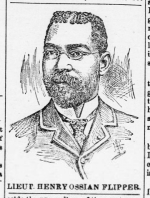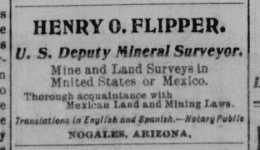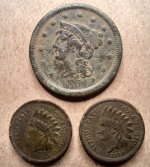Old Bookaroo
Silver Member
- Dec 4, 2008
- 4,318
- 3,510
Don Jose: This one is for you!
Capt. Allen Mclntyre, who runs the Lake Superior company's steamer Peerless between Chicago and Duluth, has just returned from a winter's sojourn in Sonora, old Mexico, where he has been for health and pleasure. As to the reported mineral discoveries, Capt. Mclntyre does not pretend to be an authority in such matters. He brought home several specimens of the ore from Taoja [sic] groups, a portion of the so called lost mines, but to the eye of experience in such matters the ore does not threaten a bonanza. The ore is free milling, but the highest assay claimed for it is $60 a ton, and this is carried in a vein not much over three or four feet wide. It is said, however, that much richer ore is being worked in a feeble way by the Mexicans in other parts of the Taoja group. "What interested me most," said Capt. Mclntyre "was the dreadfully rough country we had to traverse to get to this terra incognita. The region lies about 100 miles in an air line southeast of Torres, a station on the Guaymas branch of the Atchison and Topeka road. The country is a delightful one until you strike the foothills of the Sierra Madre range, and then it becomes grandly wild. Our party clambered for miles and miles where even the mules could hardly get a footing."
"Were the stories of Flipper's finding some records in an old ruined mission correct?"
"Not exactly. Flipper did make the acquaintance, however, of an American hero who had married the niece of a famous old padre, who lived a century or more ago, and this American had a large library, containing some works over 200 years old. Flipper knows Spanish thoroughly, and he went through some of these old books and manuscripts. It is by that means he got an inkling of where to look for the abandoned mining regions of Guyanoca [sic] and Tayoja. Flipper and Kruso went after one and M. J. Power, a miner in Mexico, and myself went for the other. The story published of ruins of villages, arastras, and other remains of an abandoned industry are correct. It was mighty interesting to me to go through these old workings. I believe within a radius of a mile I could have counted over 100 openings to these ledges. So far as we could determine, there are three ledges converging toward a center. I have no doubt that further development by modern mining methods will show that these ledges will come together, though, of course, that is only conjecture.
"One can see that these mines have been worked in a most primitive method. Even now they are not wholly abandoned. We found one aged Mexican with a burro who was getting out ore from a place where he had tapped one of the ledges. He told us that his burro could carry 250 pounds of ore. This he took some ten miles down the stream, where another Mexican had an arastra, and there the oro was worked. Each cargo, as he called the burro's load, netted him about $60, but having got that much there was no more 'mining' until the money was exhausted. These mines I have no doubt are valuable, but it will take heavy capital to operate them especially those in the Tayoja group. They are silver mines much more costly to work. The Guyanoca mines are gold, and if they are as represented - I did not see them - they are undoubtedly a bonanza."
"What other evidences do you find that these mines were worked by the ancients?"
"O, none, but the ruined adobe houses, the wrecked arastras and the tunnels that had ages ago caved. There were three or four ancient 'dumps' through which trees were growing, and I saw one broken arastra that had an oak tree nine or ten inches in diameter running right up through the bottom. It is years and years since that arastra was worked.
"But," continued the captain, "I was more struck with the agricultural and cattle raising possibilities of Sonora than anything else. I rode over thousands and thousands of acres of as fine grazing and agricultural lands as the sun ever shone upon. Men without capital could amass fortunes here in no time raising cattle for the American market. Sonora is veritably a cattleman's paradise. There is a lovely climate, abundant water, native grasses by the league, plenty of shade from thousands of oaks in the huge pastures; no snow, no cold, no blizzards and consequently no loss of stock. Mexican herders - and no more faithful set of workers can be found anywhere - can be hired for fifty cents a day and board themselves. Native cattle are dirt cheap. Cross them with American bulls and the result is some fine stock." - Chicago Tribune.
~ Wichita Eagle [Wichita, Kansas], 18 June 1887 (Vol. VII. No. 26.)
Good luck to all,
The Old Bookaroo
SONORA'S LOST MINES.
Ex-Cadet Flipper's Investigations Going Through the Old Workings.
Ex-Cadet Flipper's Investigations Going Through the Old Workings.
Capt. Allen Mclntyre, who runs the Lake Superior company's steamer Peerless between Chicago and Duluth, has just returned from a winter's sojourn in Sonora, old Mexico, where he has been for health and pleasure. As to the reported mineral discoveries, Capt. Mclntyre does not pretend to be an authority in such matters. He brought home several specimens of the ore from Taoja [sic] groups, a portion of the so called lost mines, but to the eye of experience in such matters the ore does not threaten a bonanza. The ore is free milling, but the highest assay claimed for it is $60 a ton, and this is carried in a vein not much over three or four feet wide. It is said, however, that much richer ore is being worked in a feeble way by the Mexicans in other parts of the Taoja group. "What interested me most," said Capt. Mclntyre "was the dreadfully rough country we had to traverse to get to this terra incognita. The region lies about 100 miles in an air line southeast of Torres, a station on the Guaymas branch of the Atchison and Topeka road. The country is a delightful one until you strike the foothills of the Sierra Madre range, and then it becomes grandly wild. Our party clambered for miles and miles where even the mules could hardly get a footing."
"Were the stories of Flipper's finding some records in an old ruined mission correct?"
"Not exactly. Flipper did make the acquaintance, however, of an American hero who had married the niece of a famous old padre, who lived a century or more ago, and this American had a large library, containing some works over 200 years old. Flipper knows Spanish thoroughly, and he went through some of these old books and manuscripts. It is by that means he got an inkling of where to look for the abandoned mining regions of Guyanoca [sic] and Tayoja. Flipper and Kruso went after one and M. J. Power, a miner in Mexico, and myself went for the other. The story published of ruins of villages, arastras, and other remains of an abandoned industry are correct. It was mighty interesting to me to go through these old workings. I believe within a radius of a mile I could have counted over 100 openings to these ledges. So far as we could determine, there are three ledges converging toward a center. I have no doubt that further development by modern mining methods will show that these ledges will come together, though, of course, that is only conjecture.
"One can see that these mines have been worked in a most primitive method. Even now they are not wholly abandoned. We found one aged Mexican with a burro who was getting out ore from a place where he had tapped one of the ledges. He told us that his burro could carry 250 pounds of ore. This he took some ten miles down the stream, where another Mexican had an arastra, and there the oro was worked. Each cargo, as he called the burro's load, netted him about $60, but having got that much there was no more 'mining' until the money was exhausted. These mines I have no doubt are valuable, but it will take heavy capital to operate them especially those in the Tayoja group. They are silver mines much more costly to work. The Guyanoca mines are gold, and if they are as represented - I did not see them - they are undoubtedly a bonanza."
"What other evidences do you find that these mines were worked by the ancients?"
"O, none, but the ruined adobe houses, the wrecked arastras and the tunnels that had ages ago caved. There were three or four ancient 'dumps' through which trees were growing, and I saw one broken arastra that had an oak tree nine or ten inches in diameter running right up through the bottom. It is years and years since that arastra was worked.
"But," continued the captain, "I was more struck with the agricultural and cattle raising possibilities of Sonora than anything else. I rode over thousands and thousands of acres of as fine grazing and agricultural lands as the sun ever shone upon. Men without capital could amass fortunes here in no time raising cattle for the American market. Sonora is veritably a cattleman's paradise. There is a lovely climate, abundant water, native grasses by the league, plenty of shade from thousands of oaks in the huge pastures; no snow, no cold, no blizzards and consequently no loss of stock. Mexican herders - and no more faithful set of workers can be found anywhere - can be hired for fifty cents a day and board themselves. Native cattle are dirt cheap. Cross them with American bulls and the result is some fine stock." - Chicago Tribune.
~ Wichita Eagle [Wichita, Kansas], 18 June 1887 (Vol. VII. No. 26.)
Good luck to all,
The Old Bookaroo
Amazon Forum Fav 👍
Last edited:









